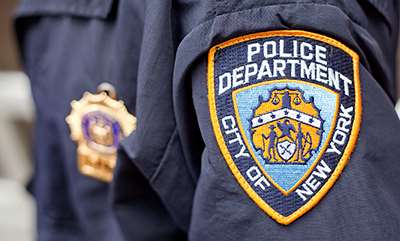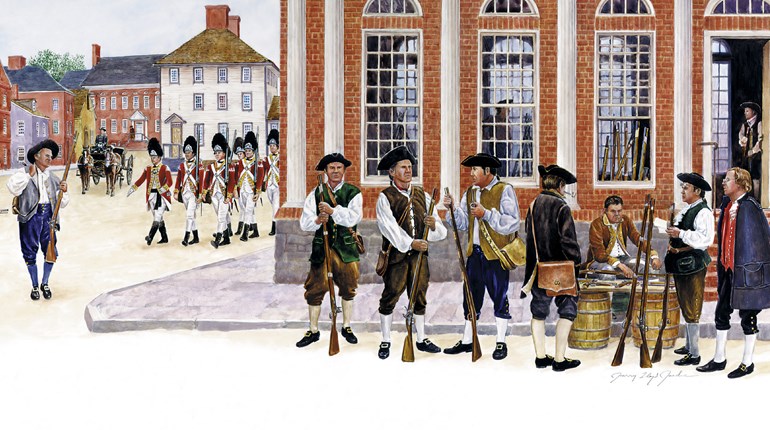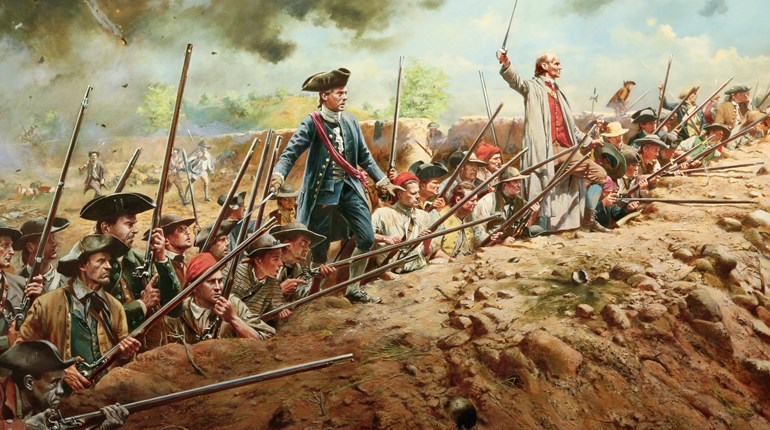
“Under New York law, it is a crime to possess a firearm,” held the U.S. Court of Appeals for the Second Circuit in U.S. v. Sanchez-Villar (2004). This ruling was based on the state’s ban on the possession of an unlicensed handgun. This Court also said that police officers who see a gun are “justified in seizing it because of its ‘immediately apparent’ incriminating character.” This prohibition did not offend the Second Amendment, said this ruling, because “the right to possess a gun is clearly not a fundamental right.”
Later rulings by the U.S. Supreme Court—D.C. v. Heller (2008) and McDonald v. Chicago (2010)—begged to differ. These rulings held that the right to possess a gun is indeed a constitutional—and therefore fundamental—right. But the Second Circuit must not have gotten the memo, because in 2018 it upheld New York City’s ban on taking a licensed handgun out of one’s house to go to a range or second home outside the City.
A police official claimed doing that would endanger public safety. How? They claimed that a person who the police extensively vetted for the license might, alas, get road rage and somehow get access to their unloaded, locked and inaccessible handgun while traveling. That flimsy, insulting allegation somehow overrode the Second Amendment.
But, when the U.S. Supreme Court said it would review that decision in New York State Rifle & Pistol Association (NYSRPA) v. City of New York, the City, fearing an embarrassing loss, quickly tweaked the law and told the Court the case was moot. This tactic worked, as the Court decided there was no longer a live controversy. Still, in a concurring opinion, Justice Brett Kavanaugh opined that “some federal and state courts may not be properly applying” its precedents, and said it is a problem the Court should address “soon.”
Justice Samuel Alito, joined by Justices Neil Gorsuch and Clarence Thomas, dissented. They would have ruled that the case was still live. They argued that the amended law was vague and that the old law did indeed violate the Second Amendment.
While the U.S. Supreme Court might just take on another Second Amendment case at some point, it would be enlightening to ask how New York City ever got so blatantly in violation of the right to keep and bear arms. New York City requires a license to carry a handgun, which no one in the City can get short of being a member of the ruling elite or paying bribes (for which arrests were recently made). New York City even requires a license to merely keep a handgun in one’s house.
It all started with the Sullivan Act of 1911, the first law in any state (other than the slave codes) to require a license for mere possession of a pistol, even in the home. That is today’s “premises license,” a license for a person to “have and possess [a pistol or revolver] in his dwelling….” For an all-but-unattainable “carry license,” one must show “proper cause” in the arbitrary mind of an official.
The Sullivan Act’s sponsor was “Big Tim” Sullivan, a state senator who is described by historian Michael Walsh as a “Tammany Hall crook, a criminal overseer of the gangs of New York.” The catch was that the law would be applied to law-abiding citizens, not to the gangs that worked for Tammany Hall, who were handy at intimidating voters at the polls. Rivals of Sullivan sewed up their pockets so the police couldn’t plant pistols in them.
The first person sentenced under the Sullivan Act was a worker named Marino Rossi, who was arrested for carrying a .38-caliber revolver in his hip pocket. The New York Times, in September 1911, reported: “Rossi explained that he was carrying the gun from fear of the Black Hand, and that his friends had warned him to do so in this city. He said that he was in fear of his life. He had no intention of using it wrongfully, and he was an honest working man and desired to know why it was that Black Handers were not arrested for carrying guns as well as law-abiding people.”
While sentencing Rossi to one year in the Sing Sing penitentiary, Judge Warren Foster expressed no concern about the lack of protection for citizens from criminal gangs like the Black Hand; instead, the judge lectured Rossi on the bad customs of Italian immigrants: “You can say ... that it was the custom of yourself as well as your countrymen to carry guns. You say you did not realize that you were breaking the law in so doing. It is unfortunate that this is the custom with you and your kind, and that fact, combined with your irascible nature, furnishes much of the criminal business in this country.... I and my colleagues on the bench intend to stamp out this habit, and with this end in view it is our object to let the community know that the violators of the Sullivan law are going to be severely punished.”
Another defendant on the docket that day was Gustav A. Kessler, a night watchman, who “had to work late at night in a dangerous part of the city, and wanted a revolver for protection against gangsters. He said he did not get a permit because he did not feel that he could spare $10 of his small wages to carry a $5 revolver.” He was just another poor workingman left defenseless by the government and then persecuted by the government.
The next day The New York Times praised the one-year prison sentence of Rossi, whose “hot-headed countrymen” customarily carried concealed weapons, adding: “The Judge’s warning to the Italian community was timely and exemplary.” The Times has had a long history of contempt for gun owners in the poorer classes.
A test case was brought challenging the requirement of a license to keep a pistol in the home. As described in People v. Warden of City Prison (1913), Joseph Darling notified the police that he had a pistol at home and had no license, for which he was arrested. His defense was “the inherent and inalienable right to keep and bear arms.”
The court acknowledged New York’s Civil Rights Law, which has a provision much like the Second Amendment, and said that “we fully recognize the proposition that the rights enumerated in the Bill of Rights were not created by such declaration. They are of such character as necessarily pertain to free men in a free state.” But they upheld the law anyway, because they felt it regulated rather than prohibited the right. The court added: “If the Legislature had prohibited the keeping of arms, it would have been clearly beyond its power.”
Imagine our Founders’ reaction to a law that limited possession of arms to those with a permit from the government. Now realize that, from there, the places like New York City have pushed the envelope so far that, in the last few decades, we have seen outright bans on handguns and ordinary rifles.
Since the Sullivan Act referred only to firearms that could be concealed on the person, the dissent in the above case noted that it did not apply to “a blunderbuss or a horse pistol,” which were too large to be concealed. He suggested that “the professional criminal will generally violate the act and take his chances of discovery and punishment, while the law-abiding citizen will be obliged to disarm himself of his only effective protection against the predatory classes.”
With his classic wit, H.L. Mencken wrote in 1925 that the Sullivan Law required that “the Second Amendment had to be severely strained, but … the courts, as usual, were willing to sign on the dotted line.” (How true that remains today!) The result was that New York “is the heaven of footpads, hijackers, gunmen and all other such armed thugs.... Not one citizen out of a hundred that they tackle is armed, for getting a license to keep a revolver is a difficult business, and carrying one without it is more dangerous than submitting to robbery,” reported the Evening Sun in November of 1925.
While World War II raged, New York courts held that they must defer to issuing authorities on whether an applicant for a license to carry a concealed pistol had “proper cause” to utilize their rights. In Moore v. Gallup (1943), the Appellate Division of the Supreme Court of New York opined that the right to bear arms, protected by the N.Y. Civil Rights Law, meant the same as the federal Second Amendment. But it added that the Second Amendment does not apply to the States, leaving one to wonder what the New York provision applied to if not to the State.
While holding that the state could ban carrying a pistol without a license, the Court also said that “the Second Amendment created no right to bear arms, a right which long ante-dated the adoption of the Federal Constitution....” If that suggested a natural or common-law right of the individual, the court next added that the Second Amendment’s only purpose is “to enable the Federal Government to maintain the public security.” If that was not enough to discount any personal liberty, the court added that “the arms to which the Second Amendment refers include weapons of warfare to be used by the militia, such as swords, guns, rifles and muskets ... but not pistols,” which “are habitually carried by ... gangsters.”
Yet the case was about a law-abiding citizen and Great War veteran who was appealing the denial of a license to carry a pistol. A friend-of-the-court brief was filed by two gun clubs, and another by the National Rifle Association, represented by Karl T. Frederick, a former Olympic shooter and Harvard Law graduate. The case had nothing to do with “gangsters.” (That seems to be the first NRA amicus brief ever filed in a court.)
The dissent would have held that such construction of the law violated the right to keep and bear arms. It noted the current perceived threat of a foreign invasion, which demonstrated the “need of the citizens to become proficient in the use of firearms....” (German U-boats had sunk 397 ships off America’s coasts, including in New York harbors, in the first six months of 1942.)
The Moore case set the stage for how New York courts would, to this very day, view the incredible shrinking “right of the people” to bear arms not actually to include “the people,” but only an elite endorsed by the authorities.

It bears recalling that there is no municipal liability in New York “for failure to provide special protection to a member of the public who was repeatedly threatened with personal harm and eventually suffered dire personal injuries for lack of such protection.” That was the 1968 ruling in the infamous case of Linda Riss, who was repeatedly denied police protection against threatened harm and who was then viciously attacked. As the dissent pointed out, “in conformity, to the dictates of the law, Linda did not carry any weapon for self-defense.... Thus, by a rather bitter irony she was required to rely for protection on the City of New York which now denies all responsibility to her.”
Nothing has changed since 1911 when Marino Rossi carried a pistol for protection against the Black Hand, for which he was sentenced to a year in prison. New York’s assurances that it will protect you and you don’t “need” a gun for protection are worthless.
Justice Thomas, joined by Justice Gorsuch, dissented when the U.S Supreme Court declined to review the Ninth Circuit’s opinion in Peruta v. County of San Diego (2016), which upheld California’s “may issue” carry license law. His words should resonate with judges who, like Judge Foster when he sent Rossi to Sing Sing, just don’t care about ordinary people who need to protect themselves from violent crime: “For those of us who work in marbled halls, guarded constantly by a vigilant and dedicated police force, the guarantees of the Second Amendment might seem antiquated and superfluous. But the Framers made a clear choice: They reserved to all Americans the right to bear arms for self-defense. I do not think we should stand by idly while a State denies its citizens that right, particularly when their very lives may depend on it.”
Just before this magazine went to print, the U.S. Supreme Court had turned down hearing 10 Second Amendment-related cases. In a dissent to one denial (Rogers v. Grewal), Justice Thomas argued that the Rogers’ case would have given the justices a chance to “provide guidance on the proper approach for evaluating Second Amendment claims” and thereby would resolve disputes among the lower courts on whether onerous restrictions are constitutional. (Attorney Stephen Halbrook has won gun cases in the U.S. Supreme Court, is a Senior Fellow with the Independent Institute and is author of The Founders’ Second Amendment and Gun Control in Nazi-Occupied France.)

































